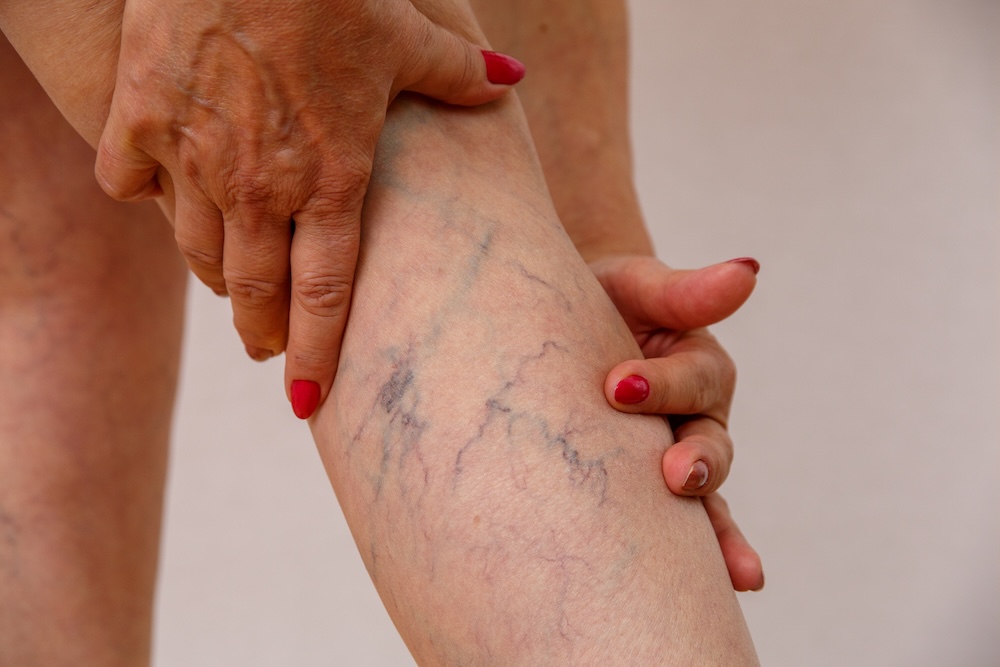Spider Veins
What You Need to Know
What are spider veins? Spider veins are small, dilated blood vessels near the surface of the skin. They get their name from their appearance, which often resembles a spider web or tree branches. Spider veins are very common, and can appear anywhere on the body.
How do spider veins look? Spider veins typically appear as
• Red, blue or purple lines
• 1-3 mm in width
• Web-like or branching pattern
• Most commonly on the legs and face
They are generally considered a cosmetic issue rather than a medical problem. However, some people may experience discomfort or aching in areas with spider veins.

What causes spider veins? Several factors can contribute to the development of spider veins:
1. Genetics: There is a strong hereditary component. If your parents or siblings have spider veins, you're more likely to develop them.
2. Hormonal changes: Pregnancy, menopause, and taking hormonal medications like birth control pills can increase the risk.
3. Age: The risk increases as you get older.
4. Prolonged standing or sitting: Occupations that require long periods on your feet or sitting can contribute.
5. Obesity: Excess weight puts more pressure on your veins.
6. Sun exposure: This can cause spider veins, especially on the face.
7. Injury or trauma to the skin
How do we treat spider veins?
1. Ultrasound Guided Sclerotherapy – This is a minimally invasive technique used to treat varicose veins and their associated feeding veins, including those that lead to spider veins. In this procedure, the doctor uses ultrasound imaging to visualize the target veins beneath the skin surface. A sclerosing agent, usually in foam form, is then injected directly into these veins under ultrasound guidance. The sclerosant causes damage to the vein wall, leading to closure and eventual fibrosis of the treated vein. Treating underlying feeding veins is often crucial for achieving successful outcomes when addressing surface spider veins.
2. Microsclerotherapy - This is considered the gold standard treatment for spider veins larger than 1 mm in diameter. A sclerosant solution is injected into the vein, causing it to collapse and fade over time. This clinic utilizes the Syris v900L visualization system by Dermlite to enhance visibility of surface veins and improve treatment success rates.
3. Laser and Light Therapy These are often used for very small spider veins (less than 1 mm) or for veins on the face.
It's important to note that while treatments can be very effective, new spider veins may develop over time. Multiple treatment sessions are often required for optimal results.
